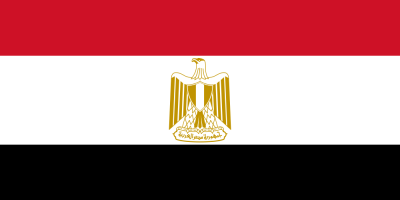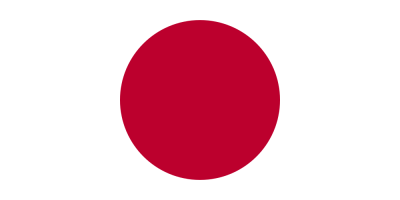Syria flag color codes features green, white and black bands with vivid red stars that have become iconic to the identity of the nation. If you need to reproduce the colors and details of the Syria flag for a digital, print or arts project, this guide provides the precise Syria flag color codes. We share the HTML HEX, RGB, PANTONE, HSL, CMYK, HWB and NCOL specifications for the colors incorporated in the Syrian national banner. Read on for the exact red, green, white and black Syria flag color values you can reference to accurately match this Middle Eastern country’s vibrant flag.
Table of Contents
What are the colors of Syria flag?
The four colors of the Syrian flag are:
Red – Used for the two green stars located in the middle white band. The red is Pantone 186 C.
Green – Represents Islam and makes up the top and bottom bands of the flag. Syria uses Pantone 340 C, a medium green shade.
White – The central band of the flag. White represents peace and neutrality.
Black – Outlines each of the two green five-pointed stars in the middle white band.
So in summary, the flag’s color scheme is:
- Green (Pantone 340 C)
- White
- Red (Pantone 186 C)
- Black
The green, white and black bands combined with the red-outlined stars create a symbolic national flag for Syria.
Syria flag color codes & Color Names:
RED
| Color Model | Value |
|---|---|
| HTML | #DE2910 |
| HEX | DE2910 |
| RGB | 222, 41, 16 |
| PANTONE | 186 C |
| HSL | 6°, 86%, 45% |
| CMYK | 0%, 82%, 93%, 13% |
| HWB | 6°, 13%, 13% |
| NCOL | #CC1700 |
WHITE
| Color Model | Value |
|---|---|
| HTML | #FFFFFF |
| HEX | FFFFFF |
| RGB | 255, 255, 255 |
| PANTONE | N/A |
| HSL | 0°, 0%, 100% |
| CMYK | 0%, 0%, 0%, 0% |
| HWB | 0°, 100%, 0% |
| NCOL | #FFFFFF |
BLACK
| Color Model | Value |
|---|---|
| HTML | #000000 |
| HEX | 000000 |
| RGB | 0, 0, 0 |
| PANTONE | N/A |
| HSL | 0°, 0%, 0% |
| CMYK | 0%, 0%, 0%, 100% |
| HWB | 0°, 100%, 100% |
| NCOL | #000000 |
GREEN
| Color Model | Value |
|---|---|
| HTML | #139A43 |
| HEX | 139A43 |
| RGB | 19, 154, 67 |
| PANTONE | 355 C |
| HSL | 133°, 88%, 34% |
| CMYK | 88%, 0%, 57%, 40% |
| HWB | 133°, 40%, 40% |
| NCOL | #0B6B2B |
What is the meaning of colors in the Syria flag?
The colors of the Syrian flag hold symbolic meaning:
Green – Represents Islam and the majority Muslim population of Syria. Green is considered a sacred color in Islam.
White – Signifies peace and neutrality. The white band separates the green bands and creates a central neutral ground.
Red – Used for the two stars which represent Syria and Egypt. Red evokes the bloodshed endured during freedom fights.
Black – Outlines each five-pointed star. Black signifies oppression and darkness from which the nation seeks to break free.
In more detail:
Green – The green connects Syria to its Islamic heritage and identity, as over 90% of Syrians follow Islam.
White – This central white band denotes peace and harmony, as Syria is a relatively religiously diverse nation in the Middle East.
Red Stars – The stars represent important uprisings and revolutions. They connect Syria and Egypt as “sister nations” due to latent pan-Arab ideology.
Black – The black outlines serve as a reminder of dark times endured when Syria was oppressed under Ottoman and French rule.
So in essence, the colors captures Syria’s Arab and Islamic identities, quest for peace, tied histories with Egypt, and the oppression Syrians have struggled under. The meaning behind the vivid colors captures key elements of the nation’s culture and values.
Explore More Flag Colors:
FAQs: Frequently Asked Questions:
What is the problem in Syria?
Syria has been facing a complex and multifaceted crisis with several interrelated problems. The situation in Syria is dynamic, and developments may have occurred since my last update. Here are some key issues:
Civil War: The most prominent and enduring issue in Syria is the ongoing civil war that began in 2011. The conflict involves various factions, including the government led by President Bashar al-Assad, rebel groups, and jihadist organizations. The war has led to significant humanitarian suffering, displacement, and loss of life.
Humanitarian Crisis: The conflict has resulted in a severe humanitarian crisis, with millions of Syrians internally displaced and millions more seeking refuge in neighboring countries and beyond. Access to basic necessities, including food, water, and healthcare, has been a major challenge.
What is the current situation in Syria 2023?
As of that time, the situation in Syria was complex, marked by ongoing conflict, humanitarian challenges, and political complexities. To obtain the most current and accurate information on the situation in Syria in 2023, I recommend checking the latest news reports, updates from reputable international organizations, and statements from relevant authorities. News outlets, government sources, and organizations like the United Nations can provide up-to-date information on the current situation in Syria.
What country is fighting Syria?
several countries have been directly or indirectly involved in the Syrian conflict, supporting different factions. It’s important to note that the dynamics of the conflict can evolve, and new developments may have occurred since my last update. Here are some key external actors that have played a role in the Syrian conflict:
Syrian Government Forces: The government of President Bashar al-Assad has been a key actor in the conflict, with support from Russia and Iran.
Russia: Russia has been a major supporter of the Syrian government. It has provided military assistance, including air support, and has been involved in diplomatic efforts related to the conflict.
Iran: Iran has been a key ally of the Syrian government, providing military support and personnel.
United States: The United States has been involved in the conflict, primarily in the fight against the Islamic State of Iraq and Syria (ISIS). U.S. support has been directed toward various groups, including the Syrian Democratic Forces (SDF).
Turkey: Turkey has been involved in the conflict, supporting certain rebel groups and conducting military operations, particularly in northern Syria. Turkey has also been involved in efforts to establish safe zones.
Israel: Israel has conducted military operations in Syria, often targeting Iranian-backed militias and military assets.
Is Syria a bad country or not?
It’s essential to approach the question of whether a country is “bad” or “good” with a nuanced perspective. Countries are complex entities with diverse populations, histories, and geopolitical dynamics. Syria, like many other nations, has faced significant challenges, particularly due to the prolonged conflict that began in 2011. Here are some key considerations:
Conflict and Humanitarian Crisis: The ongoing conflict in Syria has resulted in a severe humanitarian crisis, with widespread displacement, loss of life, and destruction of infrastructure. The impact on the civilian population has been profound, leading to immense suffering.
Cultural and Historical Significance: Syria has a rich cultural and historical heritage, with ancient cities and archaeological sites that are of global importance. The conflict has, unfortunately, led to damage and destruction of some of these cultural treasures.
Complex Political Dynamics: The political situation in Syria is complex, marked by the involvement of various internal and external actors with conflicting interests. Finding a resolution to the conflict has proven challenging.
Refugee Crisis: The conflict has contributed to one of the largest refugee crises globally, with millions of Syrians seeking refuge in neighboring countries and beyond. This has had significant implications for both Syria and the countries hosting refugees.
Is it safe to Syria?
traveling to Syria is generally not considered safe due to the ongoing conflict and security concerns. The situation in Syria has been complex, marked by violence, political instability, and a severe humanitarian crisis. The conflict has led to widespread displacement, destruction of infrastructure, and a high level of risk to the safety and well-being of those in the country.
Several governments and international organizations have issued travel advisories advising against all travel to Syria. Travelers are strongly urged to adhere to these advisories and avoid visiting the country until the security situation improves significantly.
Can you still visit Syria?
traveling to Syria is strongly discouraged due to the ongoing conflict, security concerns, and the humanitarian crisis in the country. Many governments and international organizations have issued travel advisories advising against all travel to Syria.
Visiting Syria poses significant risks to personal safety, given the unstable security situation, the presence of armed conflict, and the potential for violence. Additionally, infrastructure has been severely affected, making it challenging to ensure basic necessities and services for travelers.
Who rules Syria now?
Syria is governed by President Bashar al-Assad. Bashar al-Assad has been in power since July 17, 2000, succeeding his father, Hafez al-Assad, who had ruled Syria for nearly three decades. Bashar al-Assad’s presidency has been marked by significant political and social challenges, particularly the outbreak of the Syrian Civil War in 2011.
It’s important to note that the situation in Syria is dynamic, and political developments may occur. For the latest information on the political leadership in Syria, it is recommended to consult recent news sources and official statements from reliable authorities.
Who is Syria King?
Syria does not have a king. Syria is a republic, and its political system is characterized as an authoritarian regime with a presidency. The head of state is the President, and the political leadership is centered around the presidency.
As of my last update, Bashar al-Assad is the President of Syria. He has been in power since 2000, succeeding his father, Hafez al-Assad. The political structure in Syria is organized around the presidency, and there is no monarchy or king.













